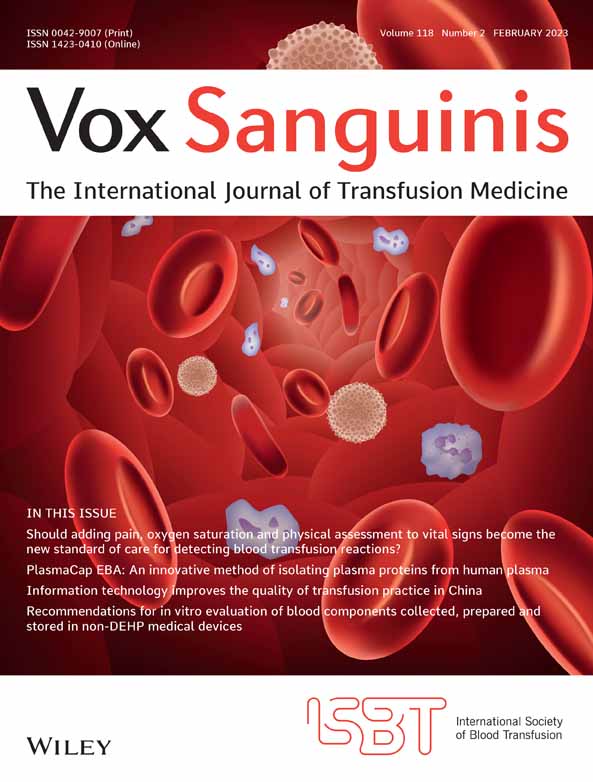Information technology improves the quality of transfusion practice in China
Gui-Ping Xu and Li-Fang Wu contributed equally to this work.
Funding information: Chongqing Natural Science Foundation, Grant/Award Number: cstc2020jcyj-msxmX0168; Kuanren Talents Program of the Second Affiliated Hospital of Chongqing Medical University, Grant/Award Number: KY2019Y024; Support Plan of Youth Innovation Team for Future Medicine, Grant/Award Number: W0099
Abstract
Background and Objectives
Transfusion services in China must establish a quality management system, and regular inspection of quality indicators is an important component of quality management. Although the positive role of information technology in reducing human errors has been widely reported, its role in improving transfusion quality indicators still requires further study. This study explores the role of information technology in improving the quality of transfusion practice.
Materials and Methods
We developed an optimized blood transfusion management information system and then analysed the changes in four quality indicators before and after using the system to clarify the role of information technology in improving the quality of transfusion practice.
Results
After using the optimized system, the completeness rate for transfusion request forms increased from 81.5% to 99.3%; an unqualified doctor's signature was the most common incomplete content (0.45%). The appropriate transfusion rate increased from 87% to 99.4%, and red blood cell and frozen plasma utilization in most surgical departments decreased. Although the reporting rate for adverse transfusion reactions increased from 0.22% to 0.49%, these increases might be partly due to changes in transfusion regulations. The adequacy rate of transfusion medical records increased from 74.8% to 90.4%. Overall, the inadequacy of informed consent for transfusion, pre-transfusion laboratory tests and documentation of the transfusion process were reduced from 6.4%, 6.2% and 12.6% to 1.7%, 2.0% and 5.9%, respectively.
Conclusion
Information technology can play an important role in improving the quality of transfusion practice, as part of a programme of medical education, regular audit and other measures.
CONFLICT OF INTEREST
The authors declare no conflicts of interest.




